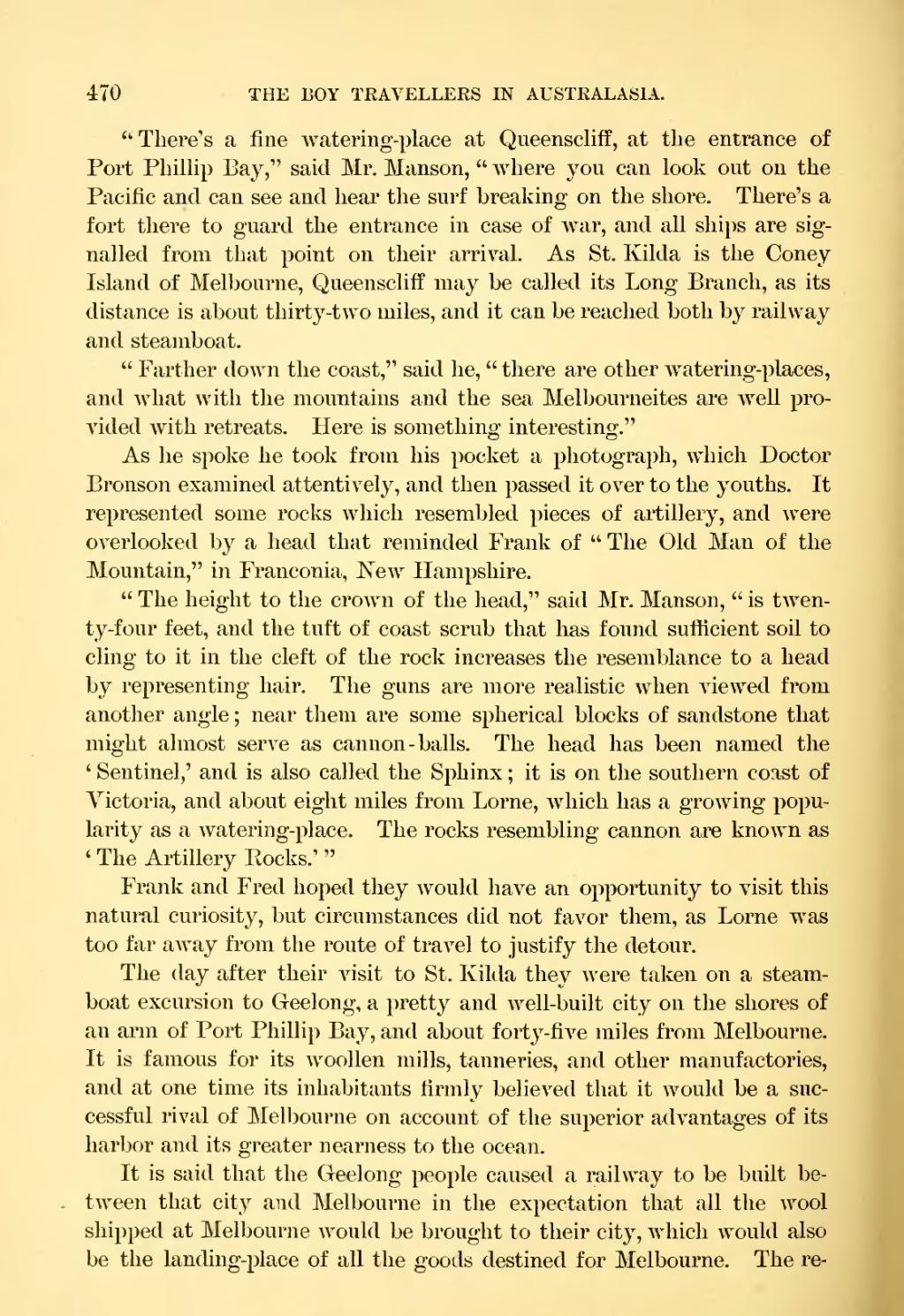"There's a fine watering-place at Queenscliff, at the entrance of Port Phillip Bay," said Mr. Manson, "where you can look out on the Pacific and can see and hear the surf breaking on the shore. There's a fort there to guard the entrance in case of war, and all ships are signalled from that point on their arrival. As St. Kilda is the Coney Island of Melbourne, Queenscliff may be called its Long Branch, as its distance is about thirty-two miles, and it can be reached both by railway and steamboat.
"Farther down the coast," said he, "there are other watering-places, and what with the mountains and the sea Melbourneites are well provided with retreats. Here is something interesting." As he spoke he took from his pocket a photograph, which Doctor Bronson examined attentively, and then passed it over to the youths. It represented some rocks which resembled pieces of artillery, and were overlooked by a head that reminded Frank of "The Old Man of the Mountain," in Franconia, New Hampshire.
"The height to the crown of the head," said Mr, Manson, "is twenty-four feet, and the tuft of coast scrub that has found sufficient soil to cling to it in the cleft of the rock increases the resemblance to a head by representing hair. The guns are more realistic when viewed from another angle; near them are some spherical blocks of sandstone that might almost serve as cannon-balls. The head has been named the 'Sentinel,' and is also called the Sphinx; it is on the southern coast of Victoria, and about eight miles from Lorne, which has a growing popularity as a watering-place. The rocks resembling cannon are known as 'The Artillery Rocks.'"
Frank and Fred hoped they would have an opportunity to visit this natural curiosity, but circumstances did not favor them, as Lorne was too far away from the route of travel to justify the detour.
The day after their visit to St. Kilda they were taken on a steamboat excursion to Geelong, a pretty and well-built city on the shores of an arm of Port Phillip Bay, and about forty-five miles from Melbourne. It is famous for its woollen mills, tanneries, and other manufactories, and at one time its inhabitants firmly believed that it would be a successful rival of Melbourne on account of the superior advantages of its harbor and its greater nearness to the ocean.
It is said that the Geelong people caused a railway to be built between that city and Melbourne in the expectation that all the wool shipped at Melbourne would be brought to their city, which would also be the landing-place of all the goods destined for Melbourne. The re-

